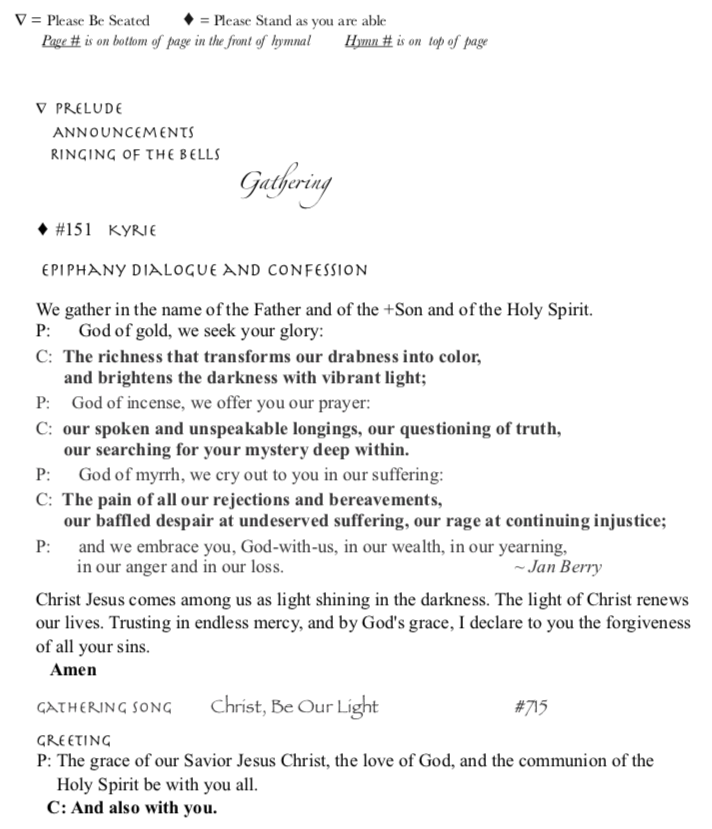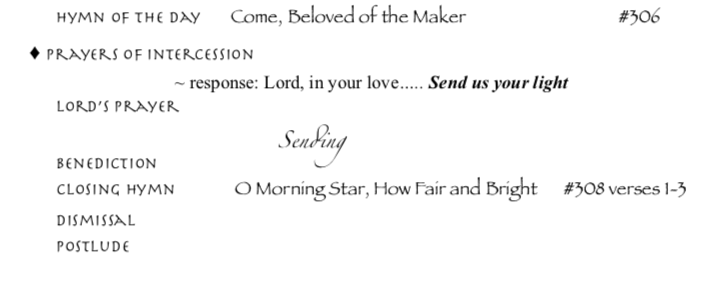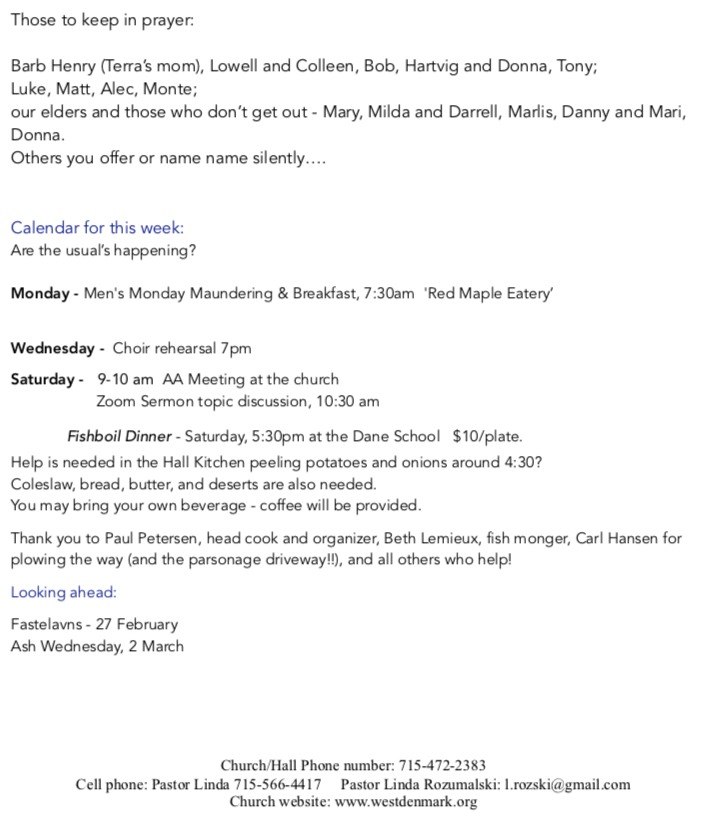Audio Recording



We begin today where we left off last week. Jesus and his friends were on the Gentile side of Lake Galilee and were invited to immediately leave, thank you, go row your boat back home after freeing a man from a legion of demons at the expense of a herd of pigs.
The Gospel according to Mark, the 5th chapter
And Jesus, having crossed over again in the boat to the other side, was by the sea and a great crowd gathered around him. One of the leaders of the synagogue came, Jairus by name, and, seeing Jesus, fell down at his feet and begged him earnestly saying, “My daughter is at the point of death. Come and put your hand on her that she may be healed and may live.” And Jesus went with him. And a large crowd followed them and were pressing in on him.
And there was a woman, being with a flow of blood for twelve years, and having suffered greatly from many physicians, and having spent all that she had, and having benefitted nothing, but rather into a worse condition having come, having heard about Jesus, having come in the crowd from behind, she touched his garment. For she was saying to herself, “If I may touch even the garments he wears, I will be healed.” And immediately the fountain of the blood was dried up within her; and she knew in her body that she has been cured from the terrible affliction.
And immediately Jesus, having known within himself that power had gone out from him, turned around in the crowd and said, “Who touched my garments?” And the disciples said to him, “You see the crowd pressing against you; and you say, “Who touched me?’ ” But he looked around to see the one had done this.
Now the woman was fearful and trembling but fell down before him and told him the whole truth. And he said to her, “Daughter, your faith has healed you; go in peace, and be healed from your affliction.”
While he was still speaking, some people came from the leader’s house to say, “Your daughter is dead. Why trouble the teacher any further?” But overhearing what they said, Jesus said to the leader of the synagogue, “Do not be afraid, only believe.”
And he did not permit anyone to follow after him except Peter, James, and John. When they came to the house of the synagogue leader, he saw an uproar, and weeping and loud wailing. And having entered, he said to them, “Why are you distressed and weeping? The child did not die but is sleeping.” And they laughed at him.
But he, having put them all outside, took the father of the child and the mother and those with him, and went in where the child was. And having taken the hand of the child, said to her, “Ta-litha koum,” which means, “Little girl, to you I say arise!” And immediately the girl arose and was walking around. She was twelve years old. They were greatly amazed. He gave orders to them earnestly saying that no one should know this, and he said to give her something to eat.”
The Word of the Lord….thanks be to God
This story-in-a-story is perhaps familiar to you [the woman who … interrupts a man who … ], but I believe that even as a duet, this passage is not meant to be heard alone.
Before we go further, I’m pausing the sermon for a bit of biblical trivia:
Chapter breaks and verses are not original to the biblical texts. They were added many centuries after Mark wrote the scroll of his gospel. As early as the 4th century there were attempts to divide the longer books of the Bible into more manageable chunks, but the chapter divisions we use today were devised by Stephen Langton when he was a teacher at the University of Paris in France. He later became Archbishop of Canterbury – he’s the same guy who brokered peace between King John and Pope Innocent III which led to the formulation of the Magna Carta in 1215. So, the chapters are relatively new to the biblical script! Verses weren’t established until the mid-1500’s. And section headings within chapters are placed and labeled by whatever committee translates and publishes the particular Bible you’re reading. There’s nothing standard about them.
So, chapters, verses and headings are of completely human origin and designed to make study of sacred texts more user friendly. But, being of human origin, mistakes were made. Perhaps the biggest error is the authority modern readers give to them. The divisions are for organization only, but they’ve been given the status of interpretative tools. That is a mistake.
Case in point, and back to our topic: we read the beginning of chapter 5 last week which told of the Geresene demoniac. In spite of the story division and section heading that appears in most Bibles, there’s no reason to break that and today’s stories apart. In fact, it helps us understand the point Mark is making if we read them as one. Jesus traveled by boat to the Greek/Gentile communities of the Decapolis on the eastern shore of Lake Galilee and hardly left the beach before rowing or sailing back to the Jewish western shore of the lake. On the eastern side he was immediately accosted by a man living wild among the tombs, cast off from his society because of the demonic spirits that ruled over him. Jesus restored his life, giving him back into community and was sent away. Back on the western shore he is immediately approached by a man as much an insider as one can get, who, none-the-less, was in similarly desperate need of this man, this manifestation of God in Jesus.
So the first news to our ears is the dramatic contrast of culture, standing, authority, credentials – and of Jesus treating them both the same. In case that comparison doesn’t make the point, up through the crowds creeps a woman. As much an outsider by nature of her gender as the Geresenes were by ethnicity. And, to up the ante, she is bleeding – barred from public contact because of the flow of blood. She is unmasked, unvaccinated and not socially distancing, even though it was well known that she should be self-isolating at home! She is as unclean as the corpse of Jairus’ daughter. Her touch contaminates Jesus. But he doesn’t seem to mind that.
Her touch altered the force. And he wants to know why and by whom. All these people are crowding in on him – as his disciples are quick to point out – but something changed when she touched his clothing. He stops and turns, studying the crowd, looking for the cause. She approaches – not wildly or boldly or confidently like the men, but in fear and trembling. Like them, she falls on her knees before him. And she tells him the whole truth. Jesus does not scold or dismiss or ignore her. They have both felt in their bodies that a healing has already taken place. It’s not through his touch or intention, but after the fact he says, “Your faith has made you well. Go in peace, daughter, and be well.”
At this point, Mark’s audience would be sitting in stunned silence. But he goes on. The time Jesus wasted on this woman has cost Jairus’ daughter her life. The deserving male, the only one in the narrative who is beyond reproach, Jairus has crossed the aisle, humbling himself to come to the rebel Jesus and emptying himself of authority and status by falling to his knees at Jesus’ feet. All this not for himself, but for the sake of his young daughter, who is not yet of age, not yet worthy of dowry or the promise of heirs, she has no value. He has come on her behalf. And Jesus waited too long. He restored the Gentile Geresene, he restored the woman, but he has put off the pleas of the religious Jewish father.
How offensive is this story? It doesn’t take much imagination to change the context and categories. How would it sound in the ears of Jewish nationalists expecting Jesus to lead them, save them – to be the triumphant Messiah God has promised them? How strangely befuddling and disappointing and upending is this story?
While Jesus was still speaking, some came from Jairus’ house to say, “Your daughter is dead. Why trouble the teacher any further?” But overhearing what they said, Jesus said to him, “Do not be afraid, only believe.”
And they go, and leaving the crowd outside, Jesus takes her hand and says, “Oh, little love, arise.”
There is so much wonderfulness in this gospel.
You can’t be expected to remember that in the beginning, Jesus went to Simon Peter’s house because his mother-in-law was sick with a fever. He went to her bed, took her hand and said, “Arise,” and she got up and made some food. Here, he says the same word and tells the girl’s parents to give her something to eat.
We are now about halfway through the gospel, and Mark wants us to hear it again. He wants to prime the pump for when God, taking Jesus by the hand, will say, “My beloved, to you I say arise!”
We don’t see that part – especially in Mark, but in Luke and John’s gospel, Jesus does then walk around and get something to eat. This healing is told now as a prefiguring, a happy warning of what is to come. God can restore, can bring a little girl back from the fresh edge of death, God’s power can prevail over death.
And then there is the back and forth. From the Jewish side to the pagan side, from the crowds to the individuals, from insiders to outlanders. Jesus’ intentional crossing over to the other side is instructive. We seem to be stuck in a time of yes or no. A 50/50 Senate is the perfect image for the age. It extends beyond politics in Washington, with sharp divisions almost everywhere we look. The content doesn’t matter, every decision is pre-determined by numbers, not reason or openminded consideration. Personal integrity, the vulnerability of true conversation has fallen from favor.
We are tribal by nature and find groupings of ‘our own kind’ within which we associate. We grow accustomed to seeing the boundaries of those other groupings as impermeable. In our minds we assign a hierarchy – those above us, where we would not be welcome or feel that we fit in, and those groups beneath us who are not as valuable.
As we can see from these stories, that is not Jesus’ way. He will continue to cross back and forth geographically, politically, socially until his death. And even then, God will reach across from the other side. We are to hear this truth. Jesus says, “Do not be afraid, only believe.”
And then there is the truth, the whole truth and nothing but the truth. Mark hints at it through his sentence structure, suggesting that it might be a long story that passed between the woman kneeling in the dust and Jesus who (maybe) squatted down to listen. It’s a long string of past participles: “And there was a woman – being with a flow of blood for twelve years, and having suffered greatly from many physicians, and having spent all that she had, and having benefitted nothing, but rather having come into a worse condition, having heard about Jesus, having come in the crowd from behind, she touched his garment. For she was saying to herself, ‘If I touch even the garments he wears, I will be healed.’” I’d like to know what she said. I wonder what I would say. What is the whole truth of your approach to Jesus? And what is the connection of restoration and faith? It’s not quite clear.
Ironically, it was the demons’ faith / knowledge of Jesus’ identity and power that healed the Geresene. The man himself had little to do with it until he was left in his own mind again, and was given a new truth to tell. The woman’s belief in his power became the agent of her own healing. It’s less clear in Jairus’ case – which is interesting given his Jewish insider stature. He sought Jesus out, Jesus tells him to believe, and Jesus raises his daughter, but doesn’t say it was because of anyone’s faith. And Jesus uses the resurrection word to restore her to life. I think it’s more a case of Jesus creating faith rather than acting because of it.
I love the gospel of Mark because it leaves so many open windows, so many things to wonder about… it doesn’t respond consistently to our yes or no, black or white categories, distinctions or expectations.
We’ve just read three interwoven accounts of faith and healing and Jesus’ action, inaction, intent or surprise – they are all different. And I think, really, that’s the way we want it to be. Not easy to categorize, no set model, no magic words, or standards of belief. God takes each case by case, meeting the needs of each individual, transforming, recreating life where it has been arrested, opening windows for for the light to shine in and for us to peer through. What would you tell Jesus? What truth of your life or self-lies – of your faith or doubt – of your attempts to approach God? Would telling it help you heal?

